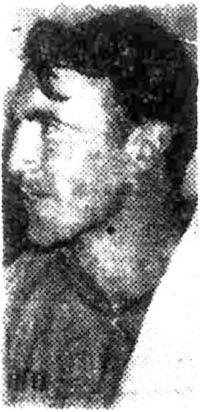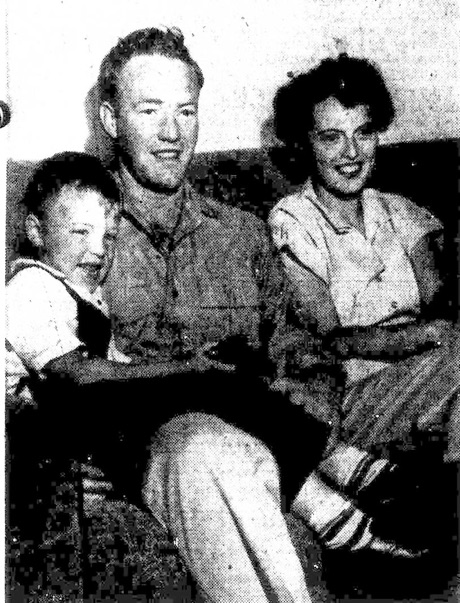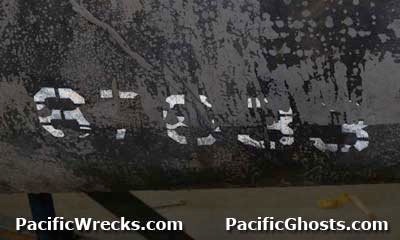Vought/Goodyear FG-1D Corsair



Bob Mester with one of the wing guns.

Vought/Goodyear FG-1D Corsair
In February 1938 while approaching the cusp of a second world war, the US Navy Bureau of Aeronautics published requests for proposals for both a twin engine and a single engine fighter plane.

In May 1938, Vought B was chosen by the Bureau of Aeronautics, and on June 11 a contract was delivered for the Vought V-166B, or more commonly known as the F4U Corsair.



For storage aboard aircraft carriers, the gull wing folded upward at the bend outside the landing gear legs. The wheels folded backwards turning 90 degrees while retracting, so as to be stored within the wing making it truly streamlined.

*Length of the plane measured 33’ 8”.
*Wingspan totaled 41 feet. (The FG-1D had their wing tips clipped by 8” per wing to allow storage in the lower hangers of British carriers)
*It could reach a speed of 446 mph @ 26,200 ft. (first Navy single engine fighter to fly over 400 miles an hour)
*Armament on the Corsair consisted of six .50” Colt-Browning M2 machine guns, (some variants had four 20mm cannon) and two 1,000 bombs or eight 5 in rockets.
* The FG-1D supported an additional belly drop tank.
The Goodyear Aircraft Corporation and the Brewster Aeronautical Corporation also helped with the manufacturing of the Corsair. Two other Corsairs that had collided in mid flight in July 1950, over Lake Washington were made by the Goodyear Aircraft Corp. with the designation FG-1D, and it is reported that this wreckage is of the same fleet. There were 4 versions of the Corsair; The Corsair I or the F4U-1 “Birdcage”, the Corsair II (F4U-1A), the Corsair III (F4U-4), and the Corsair IV (FG-1D) with variants within each.
On February 12, 1943, just 5 months after the newly formed VMF-124 Squadron received their order, the Corsair entered into combat. The U.S.M.C squadron received 22 Corsairs and by July 12, 1943, 8 U.S.M.C Corsair Squadrons were operating in the South Pacific. The Japanese nicknamed the Corsair “Whistling Death” because on an attack dive the oil cooler vanes made a loud whistle. In addition to the weapons mentioned above, the Corsair also was known to carry weaponry ranging from 500-1000 pound bombs, a 20mm cannon, and the deadly napalm.

The 1976 television program Baa Baa Black Sheep (later syndicated as Black Sheep Squadron) was loosely based on the U.S.M.C battles in WWII using the Corsair. The show was based on Major Greg “Pappy” Boyington’s squadron of “misfits and screwballs” that became the terrors of the South Pacific during WWII. The squadron was known as Pappy’s Black Sheep.
A famous Marine by the name of Charles Lindbergh, flew Corsairs as a civilian technical advisor for the United Aircraft Corp. His task was to determine how to best utilize payload and range in the attack mode and evaluate fighter design for Vought. Lindberg was the first to take to flight a Corsair (F4U) with 4,000 Lbs. of bombs; 2,000 Lb. bomb on the centerline and a 1,000 Lb. bomb under each wing. Lindberg continued to score strikes on Japanese positions during the battle for the Marshall Islands.

The first Navy Corsair squadron, the VF-17, nicknamed “Skull & Crossbones” formed on January 1, 1943 under the command of Lieutenant Commander John T “Tommy” Blackburn. The VF-17 was the first squadron to fly the Corsairs from aircraft carriers in combat. To pack in more planes on the carriers, the gull wings would fold up to a vertical position, thereby taking up less room on the flight deck.
The Corsair had many different variations, upgrades, experiments completed and used for the war effort, but by December of 1952 the long production run of the picturesque Corsair came to an end.
The Accident:
On July 29th 1950, two divisions led a formation of four Corsair fighters. Division 1 led by Lt. G.R. Botsford and Division 2 led by Lt. D.E. Freet led their men into an attack simulation over Lake Washington.
Lt. JG Ralph H. Milleson was in the #2 position in Division 1 (FG-1D Corsair BuNo. 88382) and Ensign Stanley M. Hayes flew the #4 position in Division 2 (FG-1D Corsair BuNo. 87833).


That morning there were scattered clouds around 2500 ft. above the Seattle area and Flight leader Botsford decided to lead his division into the clouds. Instead of holding formation where visibility was better, Division leader Freet followed, and failed to be extra cautious to keep Division 1 in sight. Division 1 commenced its exercises and began diving turns that caused Div. 2 to break away. Div. 2 broke left completing what’s called an “x-under” from left to right. After the cross under, Div. 2 broke away increasing the rate of descent to avoid more clouds, thereby loosing sight of Div.1. The increased rate of descent and speed of Div. 2 cautioned Ens. Hayes to drop back slightly. It was approximately 11:30 a.m. and at that time Div. 2 leader started another cross under from right to left. During the x-under Hayes collided with Millesons FG-1D Corsair. The propeller of Millesons plane chopped up the top side of Hayes’ fuselage just aft of the cockpit. Both Corsairs were fatally damaged.
Milleson decided to ditch his FG-1D into Lake Washington all the while staying at the controls. After making a successful landing, Milleson was picked up by a Navy Crash Boat while his plane silently slipped beneath the waves.
Not confident in the idea of a water landing like Milleson, Hayes decided to eject instead and parachuted safely into the lake. He too was picked up by the Navy Crash Boat. His plane wasn’t so lucky. It crashed hard just a couple hundred feet off shore and sank quickly.
Both Division leaders were ordered to appear before an informal Aviators Disposition Board.

Mrs. Hayes upon hearing the news of her husbands crash was in a panic. Her first husband was killed in a nearly identical accident in Florida, and she was near breaking down. With her husband finally at home her fear turned to anger.
“What is the matter with that other pilot anyway?” she asked her husband. Hayes quickly came to his fellow pilots side saying, “It wasn’t his fault honey, In a Corsair there’s 16 feet of nose between the pilot and the propeller. The cockpit is behind the wing too, so Milleson couldn’t see either beneath him or in front of him.”
Hayes wanted to be a Navy pilot since he was a little boy, and he always wanted to make a parachute drop.
He said he’s satisfied.
From: Courtesy Seattle Times, Navy accident report
Recovery:
Lt. JG Ralph H. Milleson’s Corsair (“S-89” BuNo. 88382) was recovered in 1983 and is on display at the Museum of Flight in Seattle Washington. For info click here.
Ensign Stanley M. Hayes’s Corsair (BuNo. 87833) has been left in Lake Washington mainly due to it’s complete destruction upon impact. Some parts were recovered in 1983 and donated to the ATF as well as given to a Gerald Yagan for restoration.

BuNo. 87833 lies in 70-90 feet of water in lake Washington scattered over a 100 yard area.
Left: Milleson
Below: Hayes


-
-Home
Below footage by Chris Borgen
